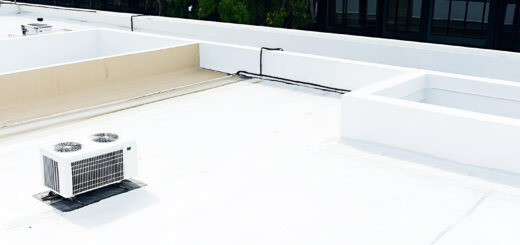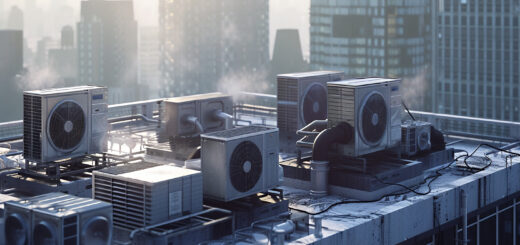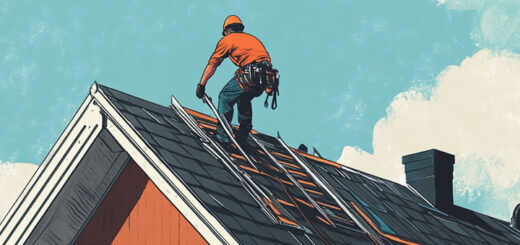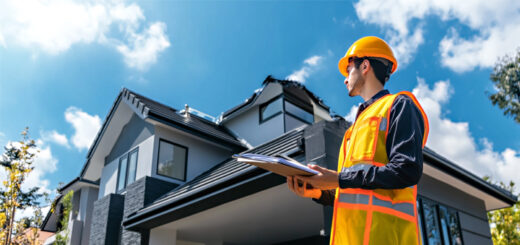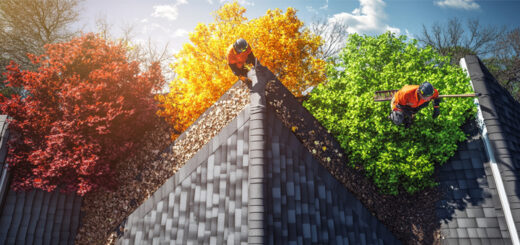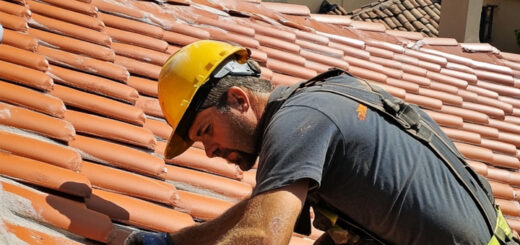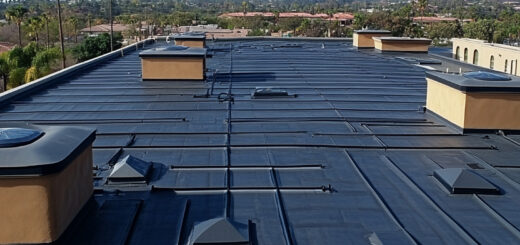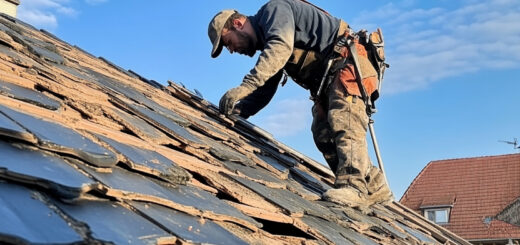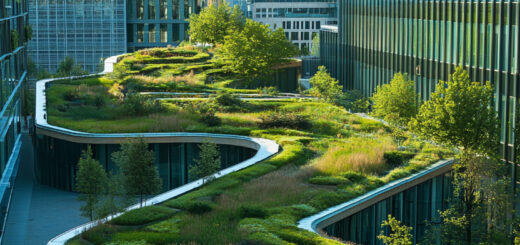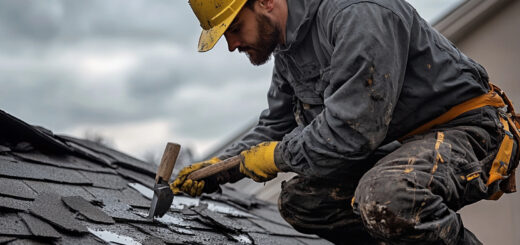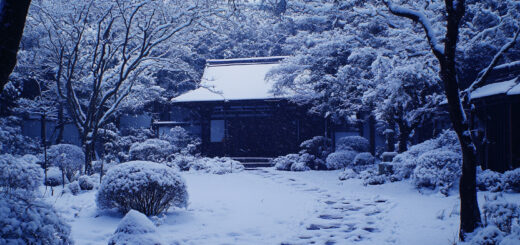Unmistakable Signs It’s Time to Replace Your Austin Roof
Age and Wear: When Your Roof Has Reached Its Lifespan
As your roof ages, it naturally undergoes wear and tear, especially in Austin’s diverse climate. The lifespan of a roof depends on various factors, including the materials used and local weather conditions. Asphalt shingle roofs, common in Austin, typically last 20-30 years, while metal roofs can endure for 50 years or more.
Signs of an aging roof include curling or missing shingles, granules in gutters, and visible sagging. Austin’s hot summers and occasional severe storms can accelerate roof deterioration, making regular inspections crucial. UV rays from intense sunlight can cause shingles to become brittle and crack over time.
As your roof approaches the end of its expected lifespan, it’s essential to monitor its condition closely. Aging roofs are more susceptible to leaks and may not provide adequate protection for your home. Consider consulting a professional roofer to assess whether your roof has reached the point where replacement is necessary, ensuring your home remains safe and protected from the elements.
Curling or Missing Shingles: Visual Indicators of Roof Damage
Curling or missing shingles are clear visual indicators of roof damage that homeowners should be aware of during routine inspections. Curled shingles often appear as edges or corners that have lifted away from the roof’s surface, creating a distinctive curl or cup shape. This curling can be caused by various factors, including age, excessive heat, poor ventilation, or improper installation.
Missing shingles, on the other hand, are more obvious signs of damage. They leave exposed areas on your roof, which can lead to leaks and further deterioration if not addressed promptly. Shingles may go missing due to severe weather conditions, such as high winds or hailstorms, or simply from wear and tear over time.
Regular roof inspections are crucial for identifying these visible problems early. Look for patterns of curling or missing shingles, as these can indicate widespread issues that may require professional attention. It’s important to note that even a few damaged or missing shingles can compromise your roof’s integrity and should be addressed as soon as possible.
If you notice curled or missing shingles during your roof inspection, it’s advisable to consult a roofing professional. They can assess the extent of the damage and recommend appropriate repairs or replacement options to ensure your roof continues to protect your home effectively.
Granules in the Gutters: A Silent Sign of Shingle Deterioration
Granule loss is a common yet often overlooked indicator of shingle deterioration. These tiny, sand-like particles play a crucial role in protecting your roof from UV rays and enhancing its fire resistance. When you notice an accumulation of these granules in your gutters, it’s time to pay attention to your roof’s health.
Regular gutter inspections can reveal early signs of shingle erosion. In Austin’s varied climate, where intense sun and occasional storms are common, roofing issues can develop faster than you might expect. As granules wash away, shingles become more vulnerable to weather damage, potentially leading to leaks and reduced energy efficiency.
Roof maintenance should include periodic checks for granule loss. If you observe a significant amount of granules in your gutters or at the base of downspouts, it’s advisable to consult with a professional roofer. They can assess the extent of the damage and recommend appropriate actions, which may range from minor repairs to a full roof replacement.
Austin homeowners should be particularly vigilant about this issue, as the local climate can accelerate shingle wear. By staying proactive and addressing granule loss early, you can extend your roof’s lifespan and avoid more costly repairs down the line.
Sagging Roof: Structural Issues That Demand Immediate Attention
A sagging roof is a clear indicator of serious structural issues that require immediate attention. This problem often stems from improper weight distribution, compromised support structures, or prolonged exposure to excessive moisture. In Austin, where building codes are stringent, a sagging roof not only violates regulations but also poses significant safety risks to occupants.
Structural damage leading to roof sagging can occur due to various factors, including inadequate roof framing, overloaded roof structures, or deterioration of supporting elements. As the roof continues to sag, it puts additional stress on walls and other structural components, potentially leading to more extensive and costly damage over time.
Austin building codes emphasize the importance of maintaining structural integrity, particularly in residential and commercial buildings. A sagging roof that doesn’t meet these standards may result in failed inspections and potential legal issues for property owners.
The urgency of roof replacement in cases of sagging cannot be overstated. Delaying repairs can exacerbate the problem, leading to more severe structural issues, water damage, and even collapse in extreme cases. Property owners should consult with licensed roofing professionals to assess the extent of the damage and determine the most appropriate course of action to ensure compliance with local building codes and restore the roof’s structural integrity.
Daylight Through the Roof Boards: Compromised Roof Integrity
Noticing daylight peeking through your roof boards is a clear indicator of compromised roof integrity. This issue demands immediate attention from Austin homeowners, as it can lead to more severe problems if left unchecked. When light penetrates through the roof deck, it often signifies gaps or holes that can allow water infiltration during rainy periods.
Regular attic inspections are crucial for early detection of such issues. By examining your attic space on a bright day, you can easily spot any light penetration, which may indicate potential roof leaks. These openings, no matter how small, can lead to significant roof deck damage over time, compromising your home’s structural integrity and energy efficiency.
Austin’s varied climate, with its hot summers and occasional storms, makes roof maintenance particularly important. Addressing these issues promptly can prevent more extensive damage and costly repairs down the line. If you notice light coming through your roof boards, it’s advisable to consult with a professional roofing contractor to assess the extent of the damage and recommend appropriate repairs.
Remember, proactive home maintenance, especially when it comes to your roof, is key to preserving your Austin home’s value and ensuring your family’s comfort and safety.
Increasing Energy Bills: How a Failing Roof Affects Your Home’s Efficiency
A failing roof can significantly impact your home’s energy efficiency, leading to increased energy bills and discomfort. Poor roof insulation allows heat to escape during winter and infiltrate during summer, putting unnecessary strain on your HVAC system. This constant struggle to maintain a comfortable indoor temperature results in higher energy consumption and, consequently, escalating costs.
In Austin, where energy costs can fluctuate dramatically between seasons, a compromised roof can be particularly problematic. The city’s hot summers and occasional cold snaps make proper insulation crucial for maintaining a consistent indoor climate. As your roof deteriorates, its ability to regulate temperature diminishes, forcing your heating and cooling systems to work overtime.
Investing in roof replacement offers numerous benefits beyond aesthetics. A new, properly installed roof provides superior insulation, creating a more energy-efficient home environment. This upgrade can lead to substantial savings on your energy bills, often offsetting the initial cost of replacement over time. Additionally, a well-maintained roof contributes to better overall home efficiency, reducing your carbon footprint and enhancing your property’s value.
Mold or Algae Growth: Moisture Problems and Health Concerns
Mold and algae growth on roofs is a common issue, particularly in humid climates like Austin. These unsightly streaks and patches are more than just an aesthetic concern; they can indicate underlying moisture problems and pose potential health risks.
Roof mold typically appears as dark spots or patches, while algae often manifests as long, dark streaks. Both thrive in moist environments and are especially prevalent in areas with high humidity. In Austin, where humidity levels can be significant, homeowners should be particularly vigilant about these issues.
Moisture damage caused by mold or algae growth can compromise your roof’s integrity over time. As these organisms feed on organic materials in your roofing, they can accelerate deterioration, potentially leading to leaks and structural damage.
Health concerns associated with mold growth are another crucial factor to consider. While not all molds are toxic, some can release spores that may cause respiratory issues, allergic reactions, or other health problems, especially in individuals with pre-existing conditions or weakened immune systems.
When addressing mold or algae on your roof, it’s essential to weigh the options of cleaning versus replacement. In many cases, professional roof cleaning can effectively remove these growths and extend your roof’s lifespan. However, if the damage is extensive or recurring, roof replacement might be the more cost-effective long-term solution.
Regular roof inspections and maintenance are key to preventing mold and algae growth, particularly in Austin’s humid climate. By addressing these issues promptly, homeowners can protect their property value and ensure a healthier living environment.
Storm Damage: Assessing Your Roof After Severe Austin Weather
After severe weather in Austin, it’s crucial to assess your roof for potential storm damage. Austin’s weather patterns can bring intense hailstorms and high winds, which may cause significant harm to your home’s protective barrier. Hail damage often appears as dents or bruises on shingles, while wind damage can result in lifted, cracked, or missing shingles.
To conduct a thorough storm assessment, start by examining your property from the ground for visible signs of damage, such as fallen shingles or debris. If safe to do so, use binoculars for a closer look at your roof’s surface. Pay special attention to areas around vents, chimneys, and skylights, as these are particularly vulnerable to leaks.
In cases of severe damage or if you’re unsure about the extent of the harm, it’s best to contact a professional roofing contractor for a comprehensive inspection. They can identify hidden issues and provide an accurate assessment of any necessary repairs.
Remember, addressing storm damage promptly is essential to prevent further complications like water infiltration or structural issues. If you suspect your roof has been compromised, don’t hesitate to seek emergency roof repair services to protect your home from additional weather-related risks.
Neighborhood Roofing Trends: When Your Neighbors Start Replacing Their Roofs
When you notice a surge in roofing projects throughout your neighborhood, it’s more than just a coincidence. This trend often signals a pivotal moment in community development and can have significant implications for property values in the area. In Austin’s dynamic real estate market, staying attuned to these neighborhood trends is crucial for homeowners.
As homes in a neighborhood age simultaneously, it’s common to see multiple roof replacements occurring within a short timeframe. This synchronized upgrade can be attributed to similar construction periods and exposure to identical weather conditions over the years. For Austin residents, this presents an opportune moment to consider their own roof’s condition and potential upgrade timing.
Keeping pace with community trends in home improvements, particularly roofing, can positively impact your property’s value. A well-maintained roof not only protects your home but also contributes to the overall aesthetic appeal of the neighborhood. In Austin’s competitive real estate landscape, such factors can make a substantial difference in property appraisals.
Moreover, when multiple homeowners invest in roof replacements, it often indicates a collective commitment to maintaining and enhancing the neighborhood’s appeal. This shared effort can lead to increased property values across the community, benefiting all residents in the long run.
By staying informed about these neighborhood roofing trends, Austin homeowners can make timely decisions about their own roof upgrades, potentially saving on costs through group rates with local contractors and ensuring their property remains competitive in the ever-evolving real estate market.
Professional Assessment: When to Call an Austin Roofing Expert
When it comes to maintaining your home’s roof, knowing when to seek professional help is crucial. While some minor issues can be addressed through DIY methods, certain situations require the expertise of Austin roofing professionals. Regular roof inspection services can help identify potential problems before they escalate, saving you time and money in the long run.
Roofing contractors are trained to spot signs of damage that may not be visible to the untrained eye. If you notice missing shingles, water stains on your ceiling, or excessive granules in your gutters, it’s time to call for a professional opinion. These experts can provide a thorough assessment of your roof’s condition and recommend appropriate solutions.
For more extensive issues or if your roof is nearing the end of its lifespan, you may need to consider Austin roof replacement quotes. Professional roofers can provide accurate estimates based on your specific needs and budget. They can also offer expert advice on the best materials and techniques for your particular situation, ensuring that your new roof will provide long-lasting protection for your home.
Remember, seeking professional help early can prevent minor issues from turning into major, costly repairs. Need to Replace the Roof? Don’t hesitate to reach out to local roofing experts for an assessment if you have any concerns about your roof’s condition or performance.

